11111
Techmatics - Tracks
- Home
- Techmatics - Tracks
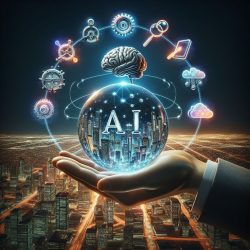
Artificial Intelligence
By speeding up research, improving data processing, and spurring innovation in disciplines like biology, chemistry, physics, and medicine, artificial intelligence is revolutionizing science. It analyzes intricate data, finds patterns, and makes predictions that are difficult for people to do. AI enhances medication development, diagnostics, and customized therapies in medicine, and it helps with climate prediction and resource management in environmental science. AI increases research efficiency and creates new opportunities for discovery by automating chores and generating deeper insights. This has enormous potential to address global issues and advance human knowledge.
Communication
In science and technology, sharing research with specialists and the general public, promoting collaboration, and expanding knowledge all depend on effective communication. In order to reach a worldwide audience, it entails releasing research, converting difficult ideas into understandable language, and utilizing resources like webinars and digital media. In disciplines like environmental science, engineering, and medicine, where it can affect sustainability, healthcare, and policy, clear communication is essential.


Chemical Engineering
In order to design and optimize processes that transform raw materials into valuable products, chemical engineers mix concepts from chemistry, physics, mathematics, biology, and economics. It focuses on enhancing industrial methods, energy production, and sustainability and is crucial to sectors like chemicals, petrochemicals, medicines, food, and environmental protection. Chemical engineers strive to improve production processes’ environmental sustainability, safety, and efficiency.
Blockchain
Blockchain is a decentralized digital ledger that ensures data security, transparency, and integrity by recording transactions across numerous computers. Each block is resistant to fraud since it contains transaction data and cannot be changed once added. Blockchain was first developed for cryptocurrencies like Bitcoin, but it is currently utilized in industries including digital identity verification, voting, healthcare, and supply chain management. It is a potent instrument for safe, effective data management without the need for middlemen because of its decentralization, immutability, and transparency qualities.

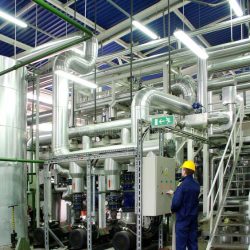
Industrial Engineering
Optimizing systems and procedures to improve productivity, quality, and efficiency in the manufacturing, operations, and service sectors is the main goal of industrial engineering. Industrial engineers develop, analyze, and oversee systems that involve people, materials, information, and equipment by utilizing concepts from the social sciences, engineering, physics, and mathematics. They strive for process improvement, waste reduction, cost reduction, and quality and safety assurance.
Internet of Things
Smarter systems are made possible by the Internet of Things (IoT), a network of connected devices that exchange information and communicate online. These gadgets, which can be everything from industrial machinery to health monitoring and domestic objects, gather and send data using sensors and software. By increasing productivity, automating procedures, and facilitating real-time monitoring, IoT has the potential to revolutionize industries like healthcare, transportation, agriculture, and smart cities.


Nuclear Engineering
The use of nuclear processes, particularly for the production of energy through nuclear reactions, is the main emphasis of nuclear engineering. In addition to creating technology for power generation, radiation protection, and the safe handling of radioactive materials, it entails the design, operation, and maintenance of nuclear reactors. Additionally, nuclear engineers support industries like waste management, radiation therapy, and medical imaging.
Information Technology
Utilizing computer systems, software, and networks to store, process, and analyze data is known as information technology (IT) in science, and it supports research in a variety of subjects. Large dataset management, simulation, system modeling, and international cooperation are all made possible by IT. IT technologies are essential for analyzing data and advancing research in fields like physics, genetics, and climate science. The way scientists approach hard problems has changed dramatically as a result of developments in high-performance computers, cloud computing, and data analytics.


Big Data
In science, “big data” refers to the enormous, intricate datasets produced by observations, experiments, and simulations that are too big to handle with conventional techniques. In disciplines including genomes, astronomy, climate science, and medicine, it enables researchers to find trends and insights. This data is analyzed with the aid of methods like AI, data mining, and machine learning, which lead to breakthroughs and discoveries. Big Data does, however, also bring with it issues with privacy, storage, and the requirement for certain knowledge and technologies.
Robotics
In science, robotics is the design and application of robots to carry out repetitive, hazardous, or challenging activities for people. Robots are used to automate tests, carry out remote operations, and collect data from inaccessible regions in a variety of industries, including industry, space exploration, medical, and environmental monitoring. Robots are becoming more precise, adaptive, and autonomous thanks to developments in AI and machine learning. In many different industries, robotics is still advancing scientific research, increasing efficiency, and improving safety.
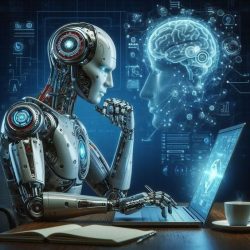

Automobile Engineering
The field of mechanical engineering known as “automotive engineering” is devoted to the design, development, production, and testing of automobiles, trucks, and motorbikes. In order to produce safe, effective, and environmentally friendly automobiles, it integrates the concepts of mechanics, thermodynamics, electronics, and materials science. In addition to integrating cutting-edge technology like electric drivetrains, autonomous systems, and infotainment, engineers work on a variety of components, including engines, transmissions, braking systems, aerodynamics, and fuel efficiency.
Marine Engineering
The field of mechanical engineering known as “automotive engineering” is devoted to the design, development, production, and testing of automobiles, trucks, and motorbikes. In order to produce safe, effective, and environmentally friendly automobiles, it integrates the concepts of mechanics, thermodynamics, electronics, and materials science. In addition to integrating cutting-edge technology like electric drivetrains, autonomous systems, and infotainment, engineers work on a variety of components, including engines, transmissions, braking systems, aerodynamics, and fuel efficiency.


Machine Learning
In science, machine learning (ML) makes use of statistical models and algorithms to let computers learn from data and anticipate outcomes without the need for explicit programming. ML analyzes big information, finds patterns, and produces insights in a variety of disciplines, including biology, chemistry, physics, and environmental research. Machine learning (ML) models complex systems in climate science and helps with medication discovery and disease outcome prediction in genomics.
Aerospace Engineering
Aeronautical engineering (flying within Earth’s atmosphere) and astronautical engineering (space exploration) are the two primary subfields of aerospace engineering, which is concerned with the design, development, and operation of aircraft and spacecraft. To guarantee the performance, safety, and efficiency of air and space vehicles, aerospace engineers develop technologies such as propulsion systems, avionics, aerodynamics, and guidance systems.

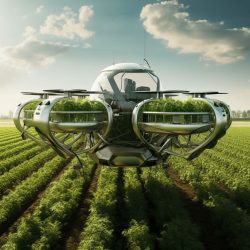
Agriculture Engineering
Agricultural engineering is the application of engineering principles to address issues connected to agriculture, improve farming methods, and increase food production. In addition to managing livestock and encouraging sustainable behaviors, it entails designing tools and systems for planting, harvesting, irrigation, and agricultural processing. Enhancing productivity, raising crop yields, conserving resources, and reducing environmental effect are the goals of agricultural engineers.
Nano Engineering
Combining concepts from materials science, engineering, physics, and nanotechnology, nano engineering focuses on creating and modifying materials and devices at the nanoscale (1 to 100 nanometers). Nanoengineers develop materials with special qualities, such as increased conductivity and strength, for use in high-performance materials, medication delivery systems, nanosensors, and sophisticated electronics.
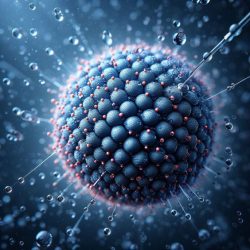

Civil Engineering
Roads, bridges, buildings, water systems, and airports are examples of the vital infrastructure that civil engineers design, build, and maintain. Civil engineers make sure structures are secure, useful, and long-lasting by applying the concepts of physics, mathematics, and materials science. In order to enhance sustainability, safety, and quality of life, the area also encompasses environmental, geotechnical, and transportation engineering.
Mechanical Engineering
The diverse discipline of mechanical engineering is devoted to the design, analysis, and production of mechanical systems. In order to build machines and gadgets for certain purposes, it integrates physics, thermodynamics, materials science, and mechanics. From little parts like gears to massive systems like power plants and robotics, mechanical engineers work on it all. This field, which aims to increase efficiency, performance, and sustainability, is essential in sectors including energy, automotive, and aerospace.

